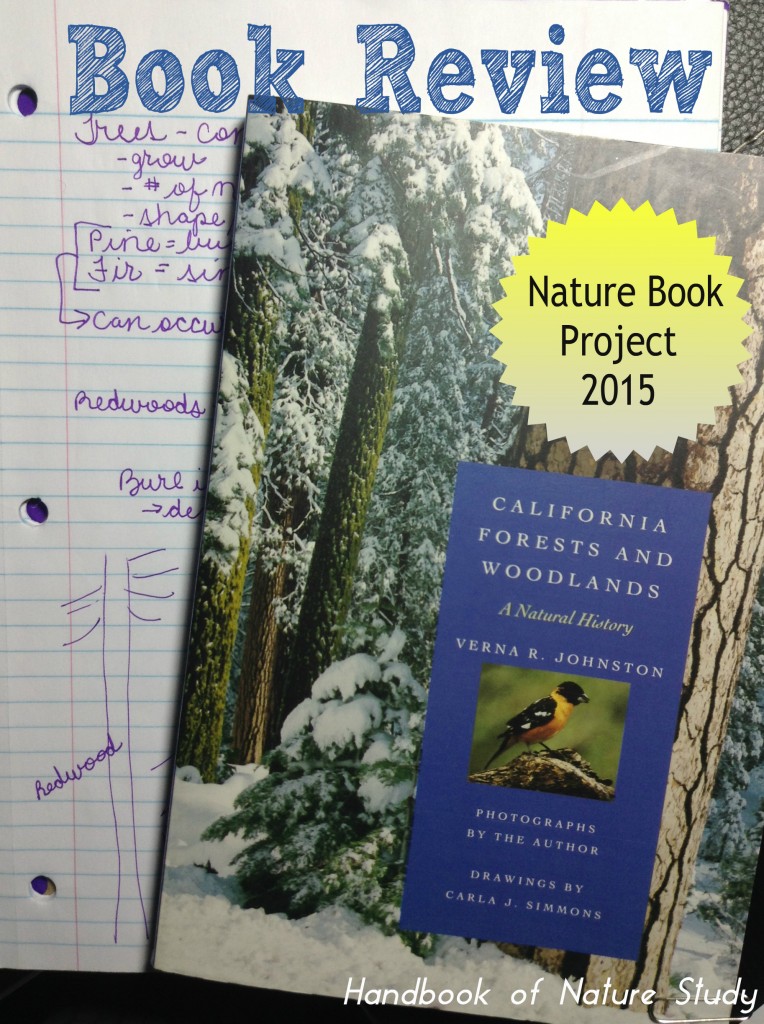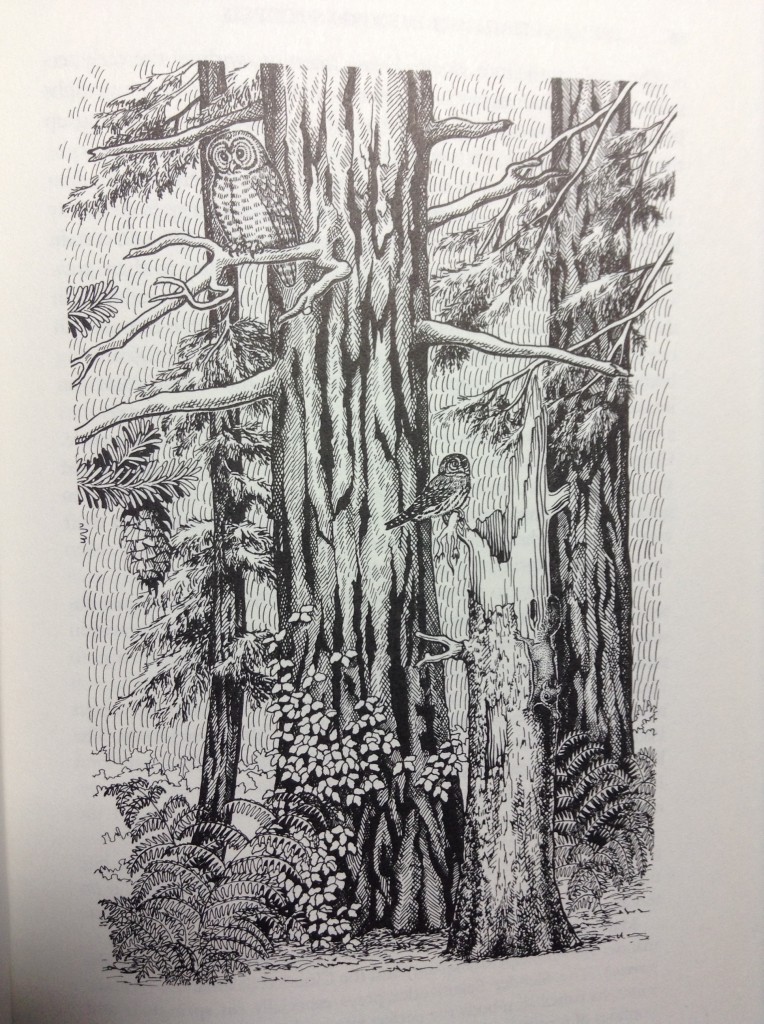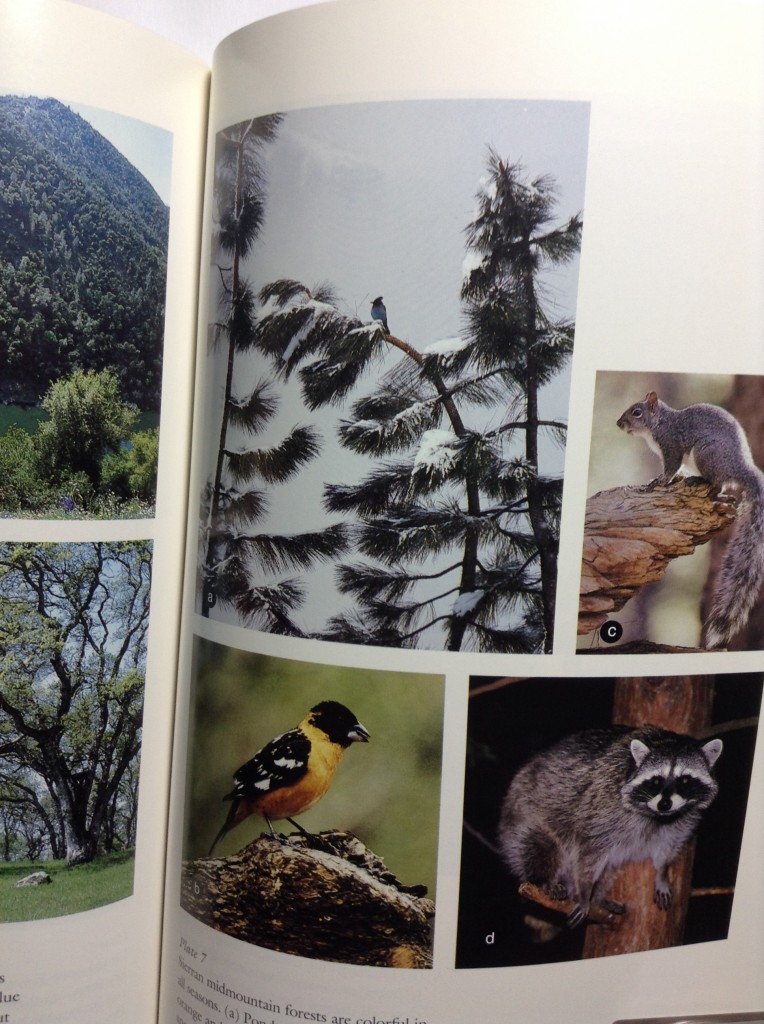The last book in my nature book project for 2015 is California Forests and Woodlands by Verna R. Johnston. I have had this book on my shelf for a few years but have never dedicated much time to actually reading it. I have skimmed through it and looked at the photos many times but to take time to sit and read with a pencil in my hand didn’t happen until this month. Amazing what a little effort will bring as far as rewards of new understanding and connections with places and trees that I have visited hundreds of times.
Here is the book ISBN if you want to look for it on Amazon or at your local retailer: California Forests and Woodlands– ISBN 978-0520202481 (Note this is an affiliate link to Amazon.com)
The first chapter spends some in-depth time showing how to recognize the different conifer trees found in California. I needed this simple explanation along with the detailed drawings to help me sort out in my mind the best way to distinguish one conifer from another by patterns of growth and numbers of needles, size and shape of the cones, and the placement of the cones on the branches.
After this chapter, the book jumps right into its first forest type, the redwoods! Then it continues with each of the other nine types of forests found in California with descriptions, facts, maps, and illustrations.
Included in each forest description are the animals that coexist in each habitat. I found this aspect of the book very informative and helpful as an amateur naturalist. Making these connections between habitat and inhabitant has given me a new respect for the interdependence of the plants and animals that thrive here in California.
- 222 pages
- This is not a field guide but rather a more narrative style book with mostly pen illustrations.
- There are 16 full color photograph plates (or pages) in this book that give a sampling of what you will see when visiting each type of forest. I found these very well done and helpful.
- Forests included: redwood, north coast, Douglas Fir/Mixed Evergreen, closed cone pine and cypress, foothill woodland, midmountain forest, Giant sequoia, red fir and lodgepole pine, subalpine forest, pinyon pine-juniper.
- This book is a little expensive (around $29) but it looks like you can order more reasonably priced used copies on Amazon (approximately $3 plus shipping).
- I am planning on using this book as I travel to different parts of my state as a way to introduce my thoughts ahead of time to what I might see during a hike or camping trip. Although this book is not a field guide, it has a section color plates with images of living things that can be seen in a particular forest habitat.
- I highly recommend this book to families who live in California and would like a supplement to the Handbook of Nature Study and a field guide.
- This book would make an excellent advanced study resource for older and more experienced nature study students.
Previous Month’s Books and Reviews
- The Wild Muir
- The Forest Unseen
- Grand Canyon-The Complete Guide
- Last Child in the Woods
- Keeping a Nature Journal
- Almost Somewhere
- Bird Watching Answer Book
- Writing About Nature
- North American Wildlife
This is the last book for 2015! I am currently working on a new idea for 2016 that you can use to create your own book list (think printable for your planner). I will post my 2016 Nature Book Project list soon.




